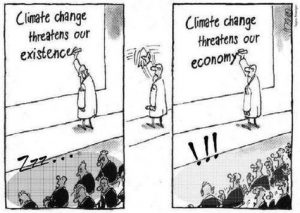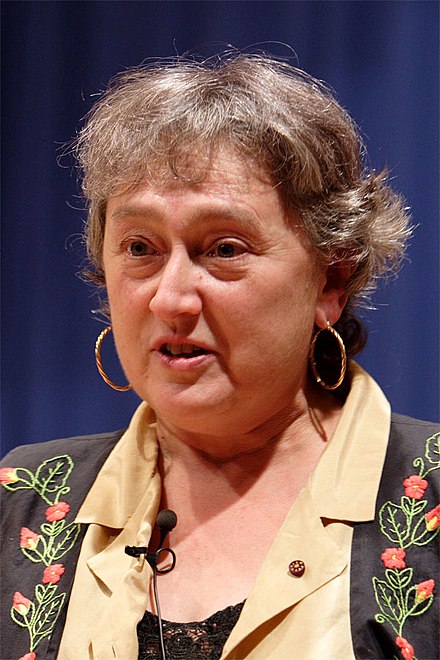New observations show that climate change is already harming us in a wide variety of ways. Possible Planet is looking at what we can do about it, from rewarding carbon capture on a global scale to refreezing the Arctic.
Mounting Evidence of Harm to Humanity and the Biosphere
Climate change—or, as Dr. Janice Kirsh prefers to call it, climate disruption1—is already upon us. The effects are real, costly, and increasingly measurable. Amongst several other dire warnings issued near the end of 2018, the latest report of the Lancet Countdown notes that “Vulnerability to extremes of heat has steadily risen since 1990 in every region, with 157 million more people exposed to heatwave events in 2017, compared with 2000,” and “153 billion hours of labour were lost in 2017 because of heat, an increase of more than 62 billion hours since 2000.” Moreover,
The direct effects of climate change extend beyond heat to include extremes of weather. In 2017, a total of 712 extreme weather events resulted in US$326 billion in economic losses, almost triple the total losses of 2016.2
Add to this the “excess costs” of rising sea levels, and rising levels of ocean acidity; the agricultural impacts and the spread of vector-borne and water-borne diseases; and the broad range of public health impacts—and it’s clear that today’s costs and consequences alone are reason enough to sound the alarm.
But the planet also faces other imminent disasters:
- the loss of natural habitat and biodiversity, precipitating what is widely considered “the sixth mass extinction event”
- the widespread loss of soil fertility threatening agricultural production
- and wars, conflicts, and mass migrations that are already being precipitated by environmental changes
 Though some people are still apparently unwilling to believe that climate change is real, or that humans are the major cause of it, these very real economic and biophysical costs are of increasing concern to global policymakers, public health professionals, the insurance industry, and even the military. And ironically it’s perhaps the risk to the economy, even more than to the biosphere, that will drive a meaningful response.
Though some people are still apparently unwilling to believe that climate change is real, or that humans are the major cause of it, these very real economic and biophysical costs are of increasing concern to global policymakers, public health professionals, the insurance industry, and even the military. And ironically it’s perhaps the risk to the economy, even more than to the biosphere, that will drive a meaningful response.
Even if we imagine for a moment that humans were not causing the climate disruption we are seeing—and it’s difficult to imagine any plausible alternative explanation—we would still, as a species, want to do something about it, just as we would if we identified a large asteroid on a collision course with the Earth. The chemical composition of the atmosphere is a major determinant of the wellbeing of all life. Whatever the causes, carbon dioxide levels are now higher than they have been for at least the past 800,000 years, and possibly for the last 15-50 million years. And since science has reliably correlated greenhouse gas levels with global temperatures, we might want to do something about the potential consequences regardless of who or what is believed to be at fault.
Most people do not realize how finely balanced the Earth’s systems are, and how little change is capable of undermining them. For example, the oxygen level is continuously replenished by the presence of life and maintained at about 21%. If it were to increase to, say, 25%, it would likely fuel firestorms that would wipe out most plant life. Ocean salinity has been at about 3.5% for most of the Earth’s history; an increase to 5% would make the oceans inhospitable to cellular life.
If it seems unreasonable that an increase in average global temperatures of one or two degrees would make such a major difference, it’s worth considering that the additional costs and consequences cited above are the result of just a 1.1°C increase in global average temperature over preindustrial levels. Climate scientists have also projected the likely consequences of continuing to allow carbon emissions to continue at their current levels, and have concluded that a significant amount of warming is already “baked in” even if we were to completely eliminate carbon emissions today.
What we now call “Climate Science” is still relatively young and is an amalgam of disciplines addressing a variety of atmospheric and other issues relating to the “dynamic disequilibrium” of our biosphere. Yet based on what we already know, we can predict the consequences of rising greenhouse gas levels with a reasonable degree of precision. And we know what some of the consequences look like. Geologically, the Earth’s climate has seen monumental shifts over its entire 4.5 billion year existence; there have been periods when the Arctic was free of ice and the oceans were 300 feet higher. If this were to occur within the next few decades (the blink of an eye in geological time) it would be catastrophic for life as we know it.
In Big World Small Planet (2015), Johan Rockström points out that in the last 12,000 years the Earth’s temperature has fluctuated only about 1°C up or down, providing the stable warm environment in which all civilizations have flourished. In the prior 150,000 years the temperature fluctuated within 5°C, leading to alternating tropical periods and ice ages, with humanity coming close to being completely wiped out in one of them. Destabilizing the climate threatens “the only state of the planet we know that can support modern societies and a world population of more than seven billion people.”3 Yet global CO2 emissions are still rising.
As Robert Keohane stated it in a lecture at Princeton University in 2014,
When—not if—the ice sheets covering Greenland and Antarctica melt significantly and the warming oceans expand, sea levels will rise. Climate warming probably will also cause stronger storms and other forms of extreme weather; agricultural production will suffer, especially at extreme levels of climate change. Such sea level rise could lead to the inundation of areas in which more than a billion people live, mostly in Asia. The implications of climate change are not simply minor adjustments in life-style, increased seasonal discomfort, and shifts of flora and fauna toward the poles, but major disruptions in human life as well as in natural ecology.4
Reports since then appear to indicate that warming is occurring faster than predicted by scientists’ models, and researchers recently warned that increasing amounts of methane are already being released by thawing ice sheets.
Most recently, at the 2018 UN climate summit in Poland, Sir David Attenborough, speaking on behalf of the world’s peoples, stated
“Right now we are facing a manmade disaster of global scale, our greatest threat in thousands of years: climate change. If we don’t take action, the collapse of our civilisations and the extinction of much of the natural world is on the horizon.” 5
And the melting of the arctic tundra, releasing vast amounts of methane (thirty times as potent as CO2), could precipitate an even greater calamity, a “runaway greenhouse” effect similar to that which is now believed to have led to the atmosphere on Venus, consisting mainly of carbon dioxide with clouds of sulphuric acid.
We could go on, citing studies, models, projections, and expert opinions. But surely this is no longer necessary to make the point that we need to take action, at pretty much all levels, as soon as possible. And even this will not be enough to prevent some—perhaps many—of the worst outcomes.
So what can we do about this?
To begin with, we can stop making the problem worse by dramatically cutting back on emissions, even though we know this is insufficient. Second, we can begin to evaluate options for removing CO2 from the atmosphere, and start to look at ways to heal the damage and restore the ecological balance of the natural systems that are under attack. And third, we can figure out how to have our institutions carry out the actions that we conclude are needed to restore the Earth’s natural regenerative capacities.
The issues that now arise are, however, considerable. There is little disagreement about the need to cut back emissions, but how, and at what rates, is greatly disputed. Technologies for removing carbon from the atmosphere are still being developed, and those which have been demonstrated are still too costly to be implemented on a broad scale. And trying to manage the planet’s natural systems through geoengineering is considered by many to be dangerously risky, unproven, and to many philosophically unacceptable.
It is true that such perspectives reflect a certain amount of hubris—who are we to believe that we’re in charge of taking care of the Earth, asks Lynn Margulis, when it’s the Earth that has been taking care of life for several billion years6—and we should be wary of supposedly simple technological fixes, when we still understand too little about the natural systems that sustain our very own existence. But as exobiologist David Grinspoon points out, we really don’t have a choice — whether we like it or not, the fate of the Earth is now in our hands:
We suddenly find ourselves sort of running a planet—a role we never anticipated or sought—without knowing how it should be done. We’re at the controls, but we’re not in control.7
So we need to look at the real conditions on the planet and look at undoing, in very concrete ways, the harm that we’ve already done, and are still doing. As Peter Fiekowski, founder of the Healthy Climate Alliance, writes:
Climate change is a physical phenomenon. It’s not philosophic, economic, or political. Only physical changes will restore the climate, specifically removing a trillion tons of carbon, and restoring the Arctic ice. Other things, such as reducing emissions and restoring forests are good and important, but they won’t restore the climate, no matter how successful they are. (Email communication)
Calling for a New Generation of “Possible Planeteers” (and yes, I know it’s a little hokey) or “Planetarians”
It’s clear, then, that if there actually is intelligent life on the planet, it’s time to declare a climate emergency. All of us are passengers on Spaceship Earth, and some of us are also crew members. We believe it’s time to call up the reserves, and enroll the next generation in taking over the guidance systems of the planet. We envision recruiting a network of volunteers committing to sharing a positive vision for creating a more resilient, sustainable, and regenerative world through research, innovation, and practical action.
If this is something that you also think is worth doing, please get in touch with me at Possible Planet.
____________
1 “Mobilizing for Climate Disruption,” at Jim Cox’s New Green Economy Podcasts.
2 The 2018 report of the Lancet Countdown on health and climate change: shaping the health of nations for centuries to come, https://www.thelancet.com/journals/lancet/article/PIIS0140-6736(18)32594-7/fulltext?code=lancet-site.
3 Big World Small Planet: Abundance Within Planetary Boundaries (2015) by Johan Rockstrom and Matthais Klum.
4https://www.apsanet.org/Portals/54/files/Publications/Journal%20Files/Madison%20Lectures/2014%20Madison%20Lecture_Keohane.pdf
5 https://www.theguardian.com/environment/2018/dec/03/david-attenborough-collapse-civilisation-on-horizon-un-climate-summit?
6 Symbiotic Planet: A New Look at Evolution (1998) by Lynn Margulis.
7 Earth in Human Hands: Shaping Our Planet’s Future (2016) by David Grinspoon



Recent Comments